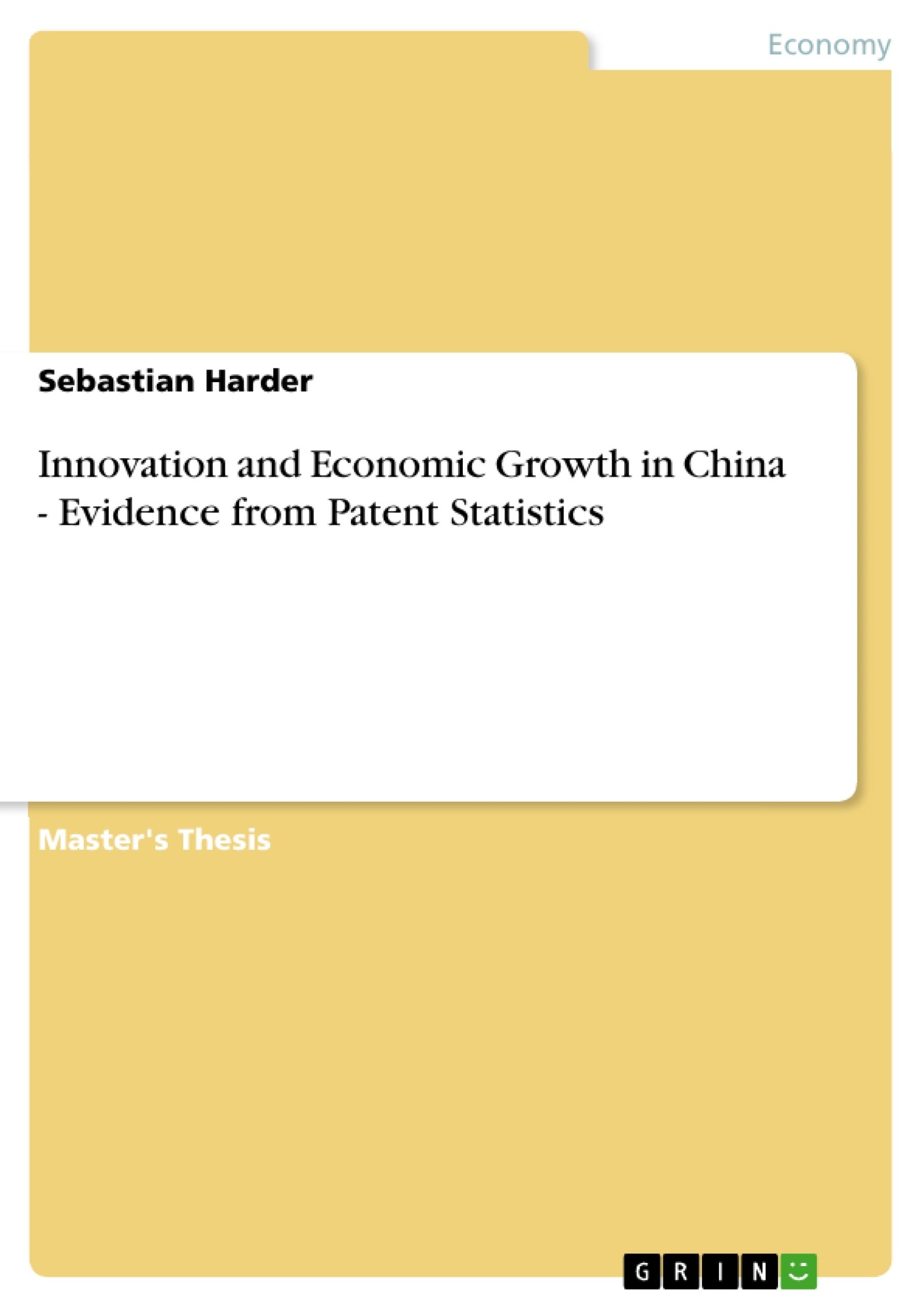China has demonstrated an enormously high rate of economic growth over a period of more than twenty years. In fact, China’s economy advances to a driving force in order to overcome the consequences of the financial crisis in 2008. This is only one reason why China has become the major object for studying economic growth as shown by thousands of publications and articles. But up to now, there have been published only few papers dealing with China’s
patenting activities. This is astonishing, given the fact that innovations expressed by patent counts are one of the key factors that drives long term growth and productivity.
Today emerging state’s economies like in China turn more and more into knowledge-based economies, where intellectual property rights play an elementary role. Moreover, IP protection
in form of patents can increase (as intangible asset) firm’s values. Furthermore, investment decisions are sufficiently influenced by the existence of a reliable patent system. While intellectual property and its protection have an essential impact on creating economic growth, the neglect of this relationship has much more negative influence on economy’s development. If an invention can be costless copied by a competitor it would be impossible to cover
the costs of the development or even to gain a profit out of it. Therefore, it is necessary to think about efficient incentive systems for inventors in order to reward their efforts. Unfortunately, it proves difficult to establish a patent system that maximises social welfare by providing just enough incentives to invent, while limiting the temporary monopoly given to the patentee.
In general, strong patents (patent length, breadth and height) can encourage innovations but too strong patents could be contrary by reducing welfare. Given China’s weak record of protecting intellectual property rights on the one hand and its
economic growth on the other hand, there seems to be a contradiction. But, a closer look reveals China’s efforts for installing an efficient patent system. For example, after passing its
first Patent Law in 1986, China has amended its Patent Law several times in order to bring it in line with international norms, as well as to support its effort to enter the WTO in 2001.
However, China’s enforcement system is still weak. The installation of China’s patent system goes along with an incredible patent surge at annual growth rates of 20%.
Inhaltsverzeichnis (Table of Contents)
- Executive summary
- Introduction
- Purpose of the thesis
- Method
- Structure
- Patent System
- Overview
- Regional and national patent systems
- European patent system
- Chinese patent system
- Global patent system under PCT
- Basic grant procedures
- Economics of Patents
- Function of the patent system
- Innovation incentives vs. social welfare
- Innovation models
- Growth theory
- Introduction
- Endogenous Growth models
- Research and development models
- Human capital models
- Critics
- Conclusions from endogenous growth models
- Preliminary conclusion
- Descriptive statistics
- Methodological background
- General trends in patenting
- Trends in patenting at the SIPO
- Hypotheses about China's upsurge in patent counts
- Hypothesis 1: R&D expenditures cause jump in patent counts
- Hypothesis 2: Amendments in China's patent laws
- Hypothesis 3: FDI has caused the rising number of patents in China
- Hypothesis 4: Increased patent production of state-owned institutions due to an improved educative sector
- Preliminary conclusion
- Patenting and economic growth in China
- Quality of Chinese patenting activities
- The role of innovation in driving economic growth in China
- The impact of patent systems and policies on innovation
- The influence of research and development (R&D) investments and foreign direct investment (FDI) on patent activity
- The connection between patent activity and economic growth
- The role of education and state-owned institutions in fostering innovation
Zielsetzung und Themenschwerpunkte (Objectives and Key Themes)
This thesis investigates the relationship between patent activity and economic growth in China. Utilizing patent statistics, the author aims to explain how China achieves high and stable economic growth rates. The study is grounded in the endogenous growth theory, examining key factors that contribute to China's increased patent activity.
Zusammenfassung der Kapitel (Chapter Summaries)
The thesis starts with an overview of the patent system, exploring regional and national patent systems, including the European and Chinese patent systems. It then delves into the economics of patents, examining the function of the patent system, innovation incentives, and various innovation models. The following chapter focuses on growth theory, specifically endogenous growth models and their implications for understanding economic growth. The thesis then delves into descriptive statistics, examining general trends in patenting, the SIPO (State Intellectual Property Office), and analyzing hypotheses about the factors driving the surge in patent counts in China, such as R&D expenditures, patent law amendments, FDI inflows, and the role of state-owned institutions. The chapter concludes with an exploration of the relationship between patenting and economic growth in China. Further chapters, including the conclusion and appendix, are not included in this preview.
Schlüsselwörter (Keywords)
This thesis focuses on the relationship between innovation and economic growth in China, utilizing patent statistics as evidence. Key terms include endogenous growth theory, patent system, innovation, R&D, FDI, economic growth, SIPO, and state-owned institutions.
- Citation du texte
- Sebastian Harder (Auteur), 2010, Innovation and Economic Growth in China - Evidence from Patent Statistics, Munich, GRIN Verlag, https://www.grin.com/document/156344



